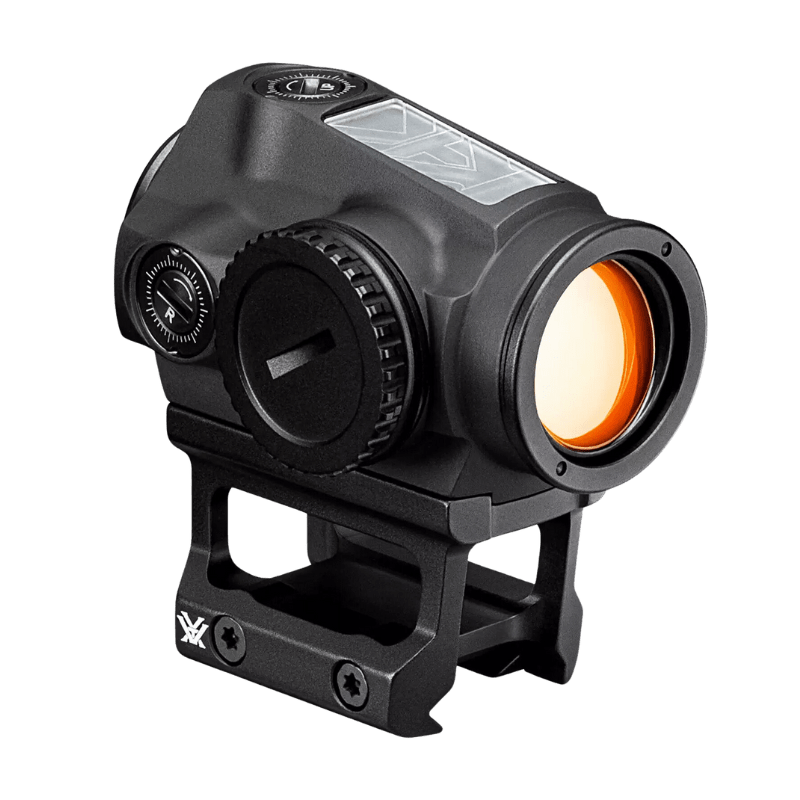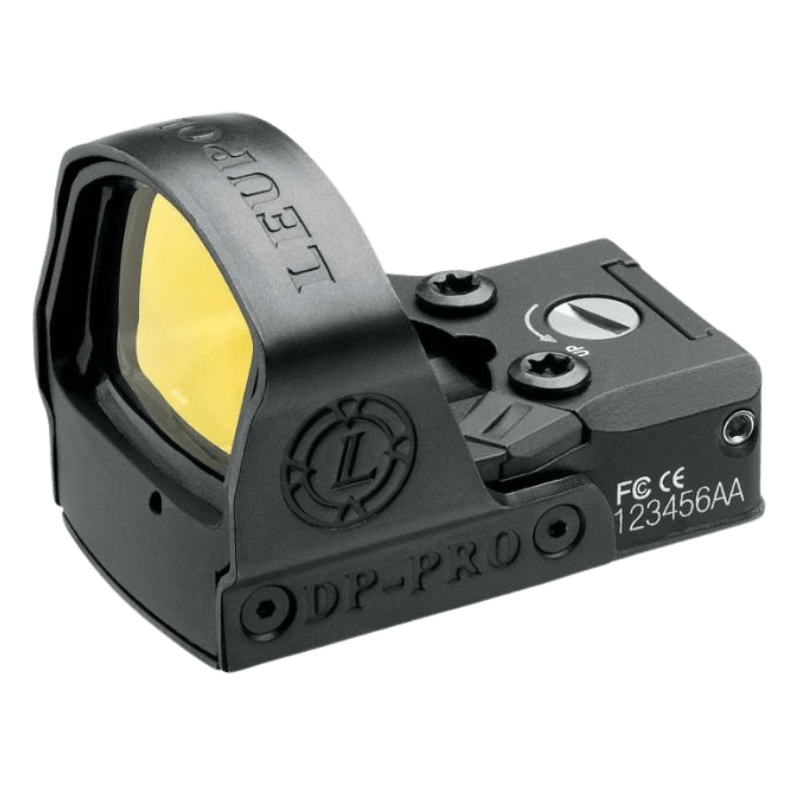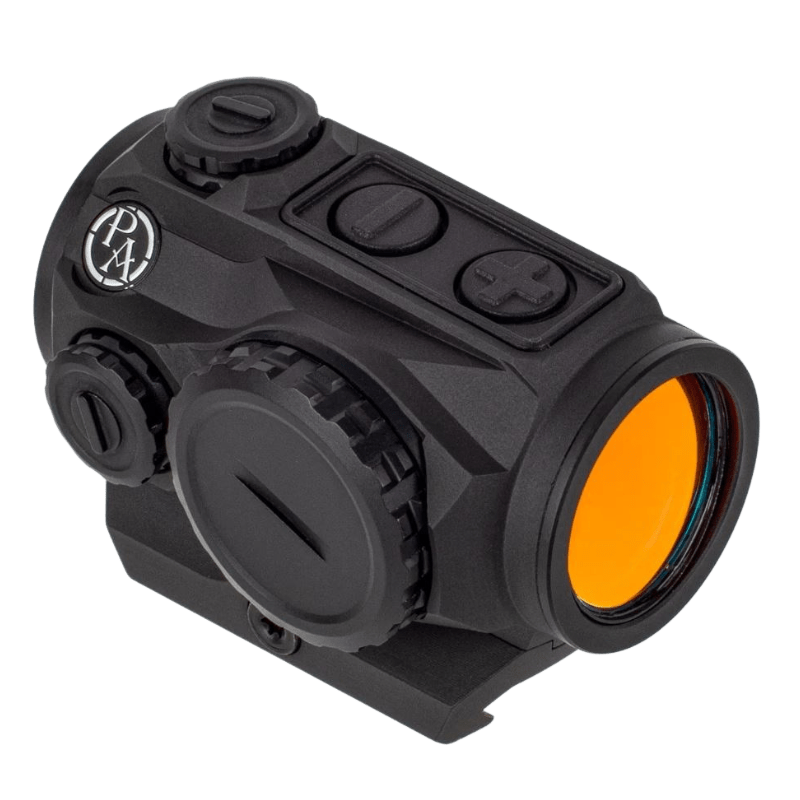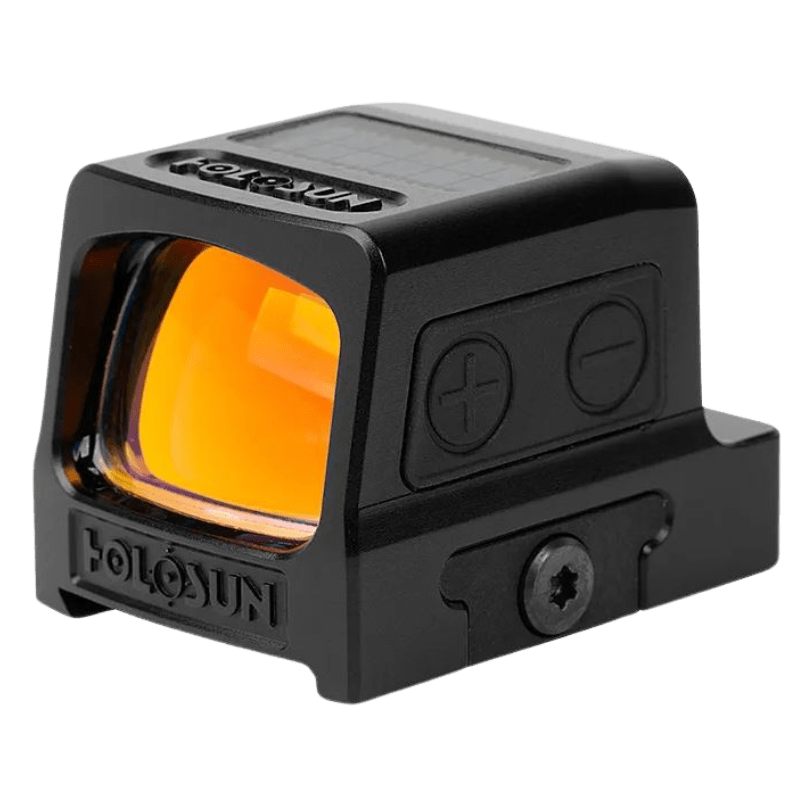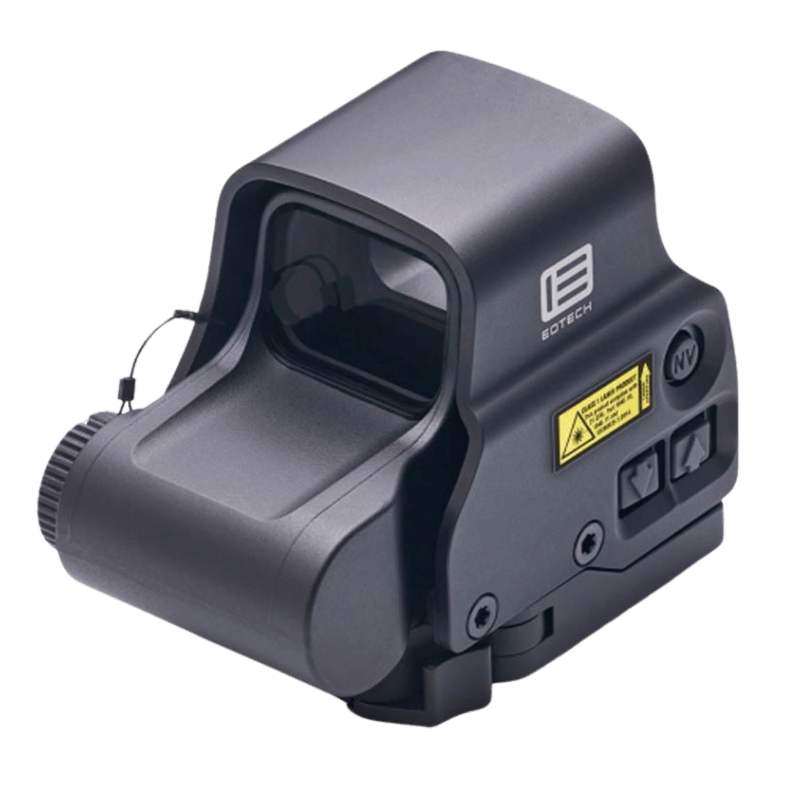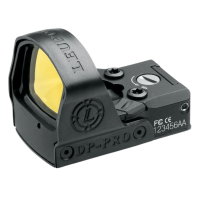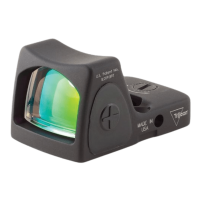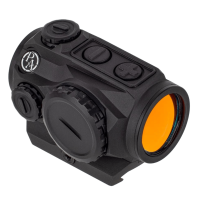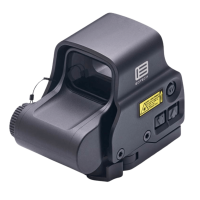Red dot optics weren’t always the province of special operators and tacticool range bros. In fact, modern electronic red dots were popularized as hunting optics by Europeans in the 1970s. The parallax-free, non-magnified dot is ideal for quick shots on running wild boar (at short ranges), and the devices have always been easy to install and maintain.
Magnified scopes are still preferred by most American hunters, but red dot optics are used to harvest thousands, if not millions, of game animals every year. Whether you’re in the market for a new red dot for turkey hunting, wing shooting, handgun hunting, or big game hunting, these products are a great place to start.
Jump to: Our Recommended Red Dots
What We Look for in a Good Red Dot Optic
The great thing about red dots is that it’s kind of hard to go wrong. As with any type of product, some units are more durable than others. But even cheap-o red dots can get the job done in a pinch, and there are no shortage of options at every price point. That caveat out of the way, here are some criteria to consider:
- Features
- Battery Life
- Dot Size
- Price
Red dots are simple devices, but you should still make sure an optic’s feature set aligns with your intended application. Two of the most important features are battery life and dot size. There’s nothing worse than taking a gun out of the case to find a non-functioning red dot, and even if it’s working, the dot can’t be too large to cover up the target. Finally, as I just mentioned, red dots come at many different price points. If you’d rather not spend $600 on a non-magnified optic, there are tons of less expensive options on the market.
Jump to: What Makes a Good Red Dot
Red Dot Optics We Recommend
With so many choices out there, picking a red dot optic for hunting can feel overwhelming. Fortunately, we’ve winnowed down this list to the best of the best. There are other great products on the market, but we know these won’t let you down.
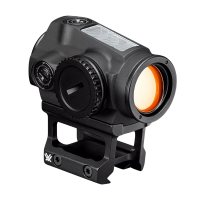 Vortex Sparc Solar
|
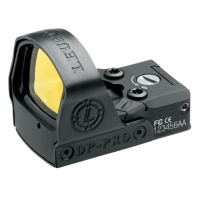 Leupold Deltapoint Pro
|
 Trijicon RMR Type 2
|
 Primary Arms SLx
|
 Holosun HE509T-RD X2
|
 EOTECH EXPS3 Holographic Sight
|
|
|---|---|---|---|---|---|---|
| Highlight | Longest Battery | Best Value | Best Reflex Sight | Best Budget | Most Versatile | Best Long Range |
| Dot Size (MOE) | 2 | 2.5, 6 | 1, 3.25, 6.5 | 2 | 2 (or 32 MOA circle) | 1 |
| Type | Fully Enclosed | Open Sight | Open Sight | Fully Enclosed | Hybrid | Enclosed, Holographic |
| Battery Life (hrs) | 150,000 | 1,600 | 35,000 | 50,000 | 50,000 | 1,000 |
| Motion Sensing On/Off | Yes | Yes | Yes | Yes | Yes | No |
| Mounting | Picatinny | RMS/c | RMR | Picatinny | RMR/Picatinny | Picatinny |
| Price | $280* | $350* | $540* | $150* | $430* | $750* |
| Field Notes | Field Notes | Field Notes | Field Notes | Field Notes | Field Notes |
What Makes a Good Red Dot
1. Features
This category is a bit of a catch-all, but the idea is to make sure you’re familiar with the way your chosen optic mounts and operates. For example…
- Micro red dots have unique dimensions or “footprints” that allow them to be mounted using attachment systems designed for that footprint (for more on red dot footprints and cross-compatibility, check out this article). Others come with an attachment system that can be installed directly onto a picatinny rail.
- Some red dots have tiny solar panels that are used to power the light emitter while others run exclusively on the battery.
- Fully enclosed red dots have a metal housing that protects all the important internal bits (that’s the technical term) whereas open sight optics use a metal shield above the glass but leave the emitter exposed.
- Red dots also come in a variety of reticle designs–from simple red or green dots to more complex circle or crosshair patterns.
The features you choose should be dictated by how you intend to use your optic. If you plan to take a red dot into the duck blind, a fast-shooting open sight is probably the way to go. Turkey hunting requires more precision, and many turkey guns come with a picatinny rail already installed, so a larger, enclosed optic would make a great choice.
2. Battery Life
The battery life arms race has been in full swing for years as optics companies try to one-up each other to offer the red dot with the longest-lasting battery. Vortex’s Sparc Solar has one of the longest at 150,000 hours, but most modern dots advertise 25,000-50,000 hours of battery life. Keep in mind that these estimates are often based on the lowest brightness setting, so real-world performance might differ.
I would argue that an even more important feature related to battery life is a motion-activated on/off function. This ensures that if you forget to turn the dot off before you put it back in the safe, the optic will automatically power down and save you from a frantic search for batteries the next time you visit the range. Even with that feature, it’s a good idea to swap out all your batteries every year or two, depending on use.
3. Dot Size
Most red dots are available in a few different dot sizes. Larger dots are better for quick, short-range work while smaller dots are better for long-range shots. Large dots are easier to pick up quickly but will cover your target at long range; small dots are capable of more precise aiming.
Most red dot sizes range between 2 “minutes of angle” (MOA) and 6 MOA. A minute of angle is equal to about an inch every 100 yards. So, a 2 MOA dot will cover two inches at 100 yards, four inches at 200 yards, etc. A 6 MOA dot will cover six inches at 100 yards and a full foot at 200 yards. Knowing this, it’s easy to see how a 6 MOA dot wouldn’t be great for chasing feral hogs but it might be ideal for big Canada geese at 40 yards.
My advice? Test out a few different sizes before settling on one. Everyone is different, and you might find that your opinion differs from your buddy’s (or those pesky gun writers on the Internet).
4. Price
Red dots can be found from $20 for an Amazon special to $700 for a Trijicon MRO used by special operators. Most of the options on our list fall between those two extremes, and you can find lots of high-quality optics for less than $300. And here’s the thing about red dots: shelling out more money gets you a more rugged product, but it doesn’t necessarily improve your experience. “Glass quality” doesn’t matter as much in a red dot as it does a magnified scope. So, if you’re not planning to abuse your red dot in a Humvee in the backwaters of Iraq, you don’t need a top-tier red dot. That turkey will be just as dead with a less expensive unit.
Why You Should Use a Red Dot for Turkey Hunting
You can kill a turkey with iron sights, no doubt about it. But if you’re like MeatEater’s Janis Putelis, you know you could always improve your chances against wiley gobblers.
"I'm a big fan of red dots for turkey hunting," he said. "The red dot allows you to sight in your load just as you would a bullet for a rifle. There's no more holding a little left or a little high to adjust for the impact of the shot."
Once you settle on a certain load for turkey hunting, you can adjust the red dot to align with the center of the pattern. That way, as long as you do your job behind the trigger, you know you’re getting as many pellets in the bird’s noggin as possible.
Plus, red dots are easier to aim than iron sights, which is great for young and old turkey hunters alike. Rather than line up the front and rear sights (or ensure proper head alignment with just a front bead), a red dot allows a hunter to simply put the red dot on the bird’s head and pull the trigger. It doesn’t get much simpler than that.
Ultimately, all of this precision allows for more confident hunting and the potential for longer-but-still-ethical shots. A turkey hunter shouldn’t set out to make a long shot on a turkey, but if the gun/shot combo is capable of a 50-yard shot, you shouldn’t be limited by an imprecise aiming system.
Our Recommendations
Longest Battery Life
As far as I am aware, the Vortex Sparc Solar has the longest advertised battery life of any red dot on the market. At 150,000 hours of run time, you could raise a kid to adulthood before the red dot runs out of juice. As MeatEater’s Janis Putelis put it, "I first started with the Vortex Venom and now I’m using the new Vortex Sparc Solar. It’s one hell of a high-tech piece of gear."
Of course, that estimate assumes a certain amount of use in the sunlight, where the tiny solar panels have a chance to run the red dot without using the battery. But if you use it regularly outside, you’re unlikely to need to change the batteries any time soon. Plus, the enclosed design is rugged and reliable, the dot has 10 daytime illumination settings and two night vision settings (for you hog hunters), and the 2 MOA dot is ideal for precise shots on everything from turkeys to hogs.
Specifications
- Dot Size (MOA): 2
- Type: Fully Enclosed
- Battery Life (hrs): 150,000
- Motion Sensing On/Off: Yes
- Mounting: Picatinny
- Price: $280
Best Value
Leupold’s DeltaPoint Pro has been a mainstay of the red dot world for many years, and it’s continued to be a favorite of hunters, competitive shooters, and military/law enforcement. I’ve had mine for about five years, and I’ve had zero issues in the field or at the range. The dot is clear, the auto-on function has never failed, and the optic has never lost zero. The open sight design is ideal for quick shooting, but a fully enclosed unit would be more durable in the field. Still, the 2.5 MOA dot is a nice size for both short and medium-range work. The only downside of this unit is the battery life. At 1,600 hours while using a low intensity dot, it’s by far the shortest of the bunch (excepting the EOTECH holographic sight).
Specifications
- Dot Size (MOA): 2.5, 6
- Type: Open Sight
- Battery Life (hrs): 1,600
- Motion Sensing On/Off: Yes
- Mounting: RMS/c
- Price: $350
Best Reflex Sight
No best red dot list would be complete without mentioning Trijicon’s famous reflex optic. In fact, I’d say it’s one of the best red dots money can buy (and you will be needing lots of it). The RMR comes in dozens of options featuring different dot sizes, colors, and mounting systems. The large buttons on either side of the housing are easy to operate and can adjust illumination brightness, toggle between manual and automatic modes, and power down the RMR for storage. While its open emitter could be cause for concern about durability, Trijicon developed a patented housing shape that, they say, absorbs impact and diverts stress away from the lens. In addition, two drain holes on either side of the unit direct water and dirt away from the emitter. If that’s not enough to convince you, keep in mind that US SOCOM named the RMR as their official handgun reflex sight. Are you tougher on your optics than special operators? Probably not.
Specifications
- Dot Size (MOA): 1, 3.25, 6.5
- Type: Open Sight
- Battery Life (hrs): 35,000
- Motion Sensing On/Off: Yes
- Price: $540
Best Budget
Texas-based Primary Arms has made a name for itself by offering solid optics at extremely reasonable prices. The optical quality might not be as good as more premium products, but again, it’s a red dot. As long as it holds zero and turns on, the animal on the business end of the gun is probably in trouble. There are other decent red dots around this price point (Bushnell’s TRS-25 comes to mind), but they probably don’t have as robust a feature set. The SLx MD-20 is equipped with a motion-activated auto-on feature that reduces wear on the battery. It also has low-profile, snag-free adjustment turrets to change point of aim, and push buttons rather than a large dial to adjust dot brightness. The 12 brightness settings, night vision compatibility, and 50,000 hours of battery life put it in a higher category without the requisite price hike. We also like that it has a 2 MOA dot instead of a 3 MOA dot.
Specifications
- Dot Size (MOA): 2
- Type: Fully Enclosed
- Battery Life (hrs): 50,000
- Motion Sensing On/Off: Yes
- Mounting: Picatinny
- Price: $150
Most Versatile
Holosun helped popularize solar panel red dot technology (hence the company’s name), and this model is packed with features that make it a great option for hunts and firearms of all kinds. The HE509T-RD X2 is an “enclosed reflex” optic, which means it combines the wide viewing area of a reflex sight, but the emitter is enclosed for added durability. This makes it a great option for shotgun applications, but users have peace of mind that the emitter isn’t exposed to the elements. Users can also choose from three reticle options: a single, 2 MOA dot; a 2 MOA dot in the middle of a 32 MOA circle; or just the 32 MOA circle. The larger circle makes quick target acquisition easier while the relatively small dot is good for longer-range precision shots. This model is equipped with auto-on technology, but it can also power the red dot using only solar power even if the battery fails. That means, as long as you aren’t hunting geese or turkeys at night, you’ll still have a working red dot even if the battery somehow dies.
Specifications
- Dot Size (MOA): 2 (or 32 MOA circle)
- Type: Hybrid
- Battery Life (hrs): 50,000
- Motion Sensing On/Off: Yes
- Mounting: RMR/Picatinny
- Price: $430
Best Long Range
Before you head down to the comments, I know that what we usually call “red dots” are not the same thing as holographic sights (which is what this EOTECH is). But while the technology is different, the end is the same: a red dot that provides a point of aim.
With that mea culpa out of the way, here’s why the EOTECH EXPS3 is the best option for long-range work. First, it features a tiny, 1-MOA dot. This ensures that the dot won’t cover the target until it’s several hundred yards away (depending on the size of the target). EOTECH offers several different reticle options, a few of which use additional 1-MOA dots underneath the middle dot that indicate holdovers at longer distances. Finally, holographic sight technology creates a sharper dot, which will produce less variance when using a magnifier. Red dots can use magnifiers, too, but holographic sights like this EOTECH tend to look better.
Holographic sights aren’t perfect. They tend to be heavier, larger, more expensive, and offer a shorter battery life. But for long-range work on coyotes, hogs, or steel targets, you won’t find a more effective “red dot” sight than this offering from EOTECH.
Specifications
- Dot Size (MOA): 1
- Type: Enclosed, Holographic
- Battery Life (hrs): 1,000
- Motion Sensing On/Off: No
- Mounting: Picatinny
- Price: $750

